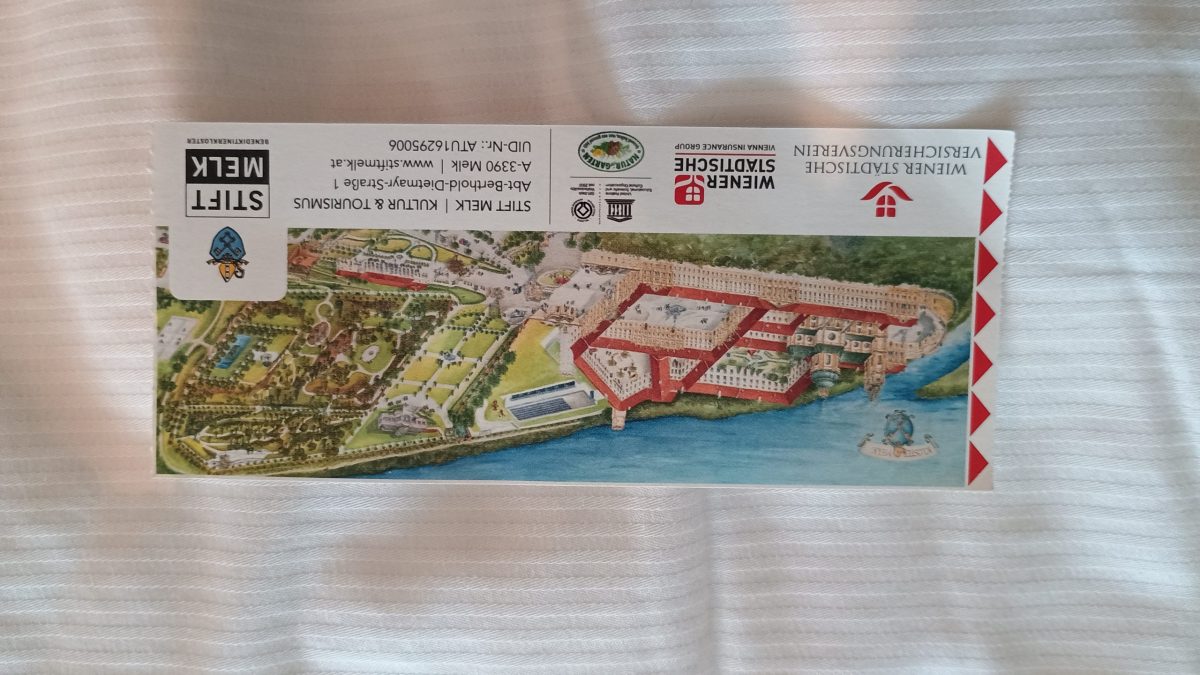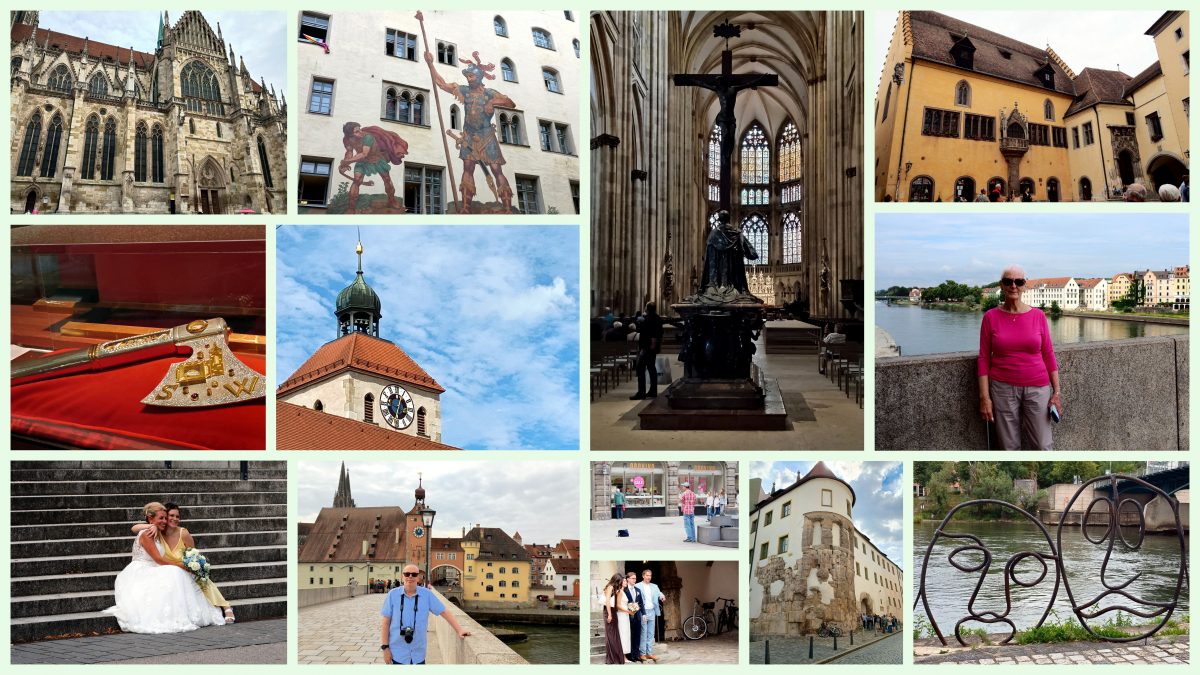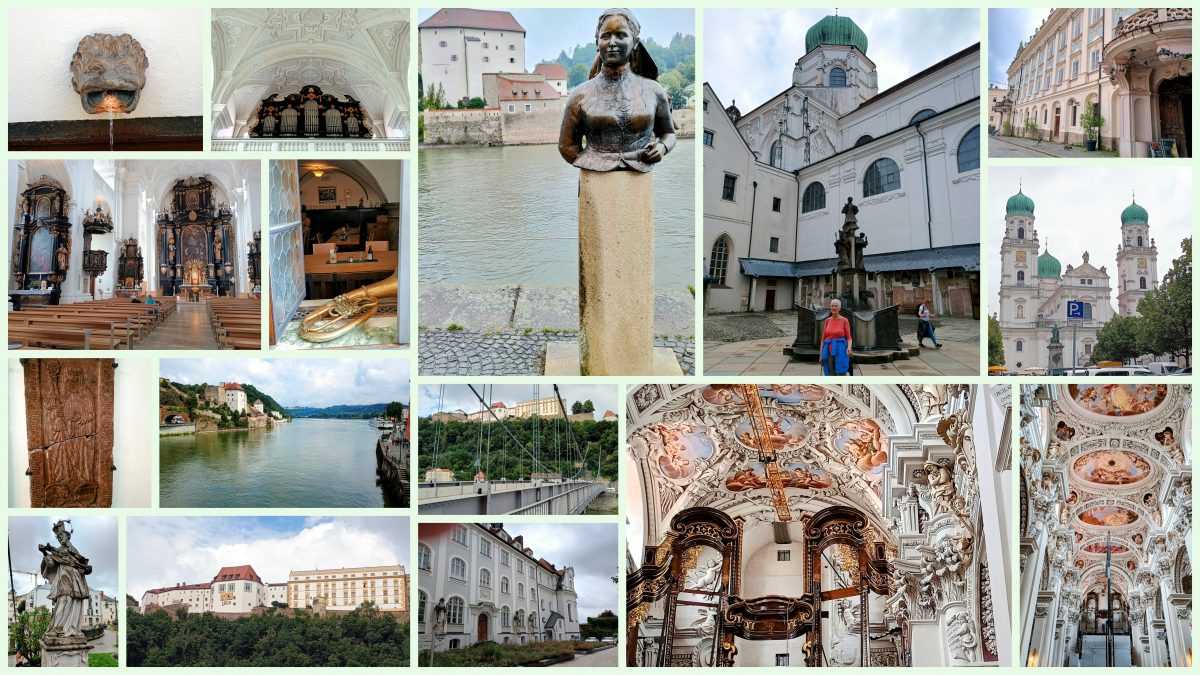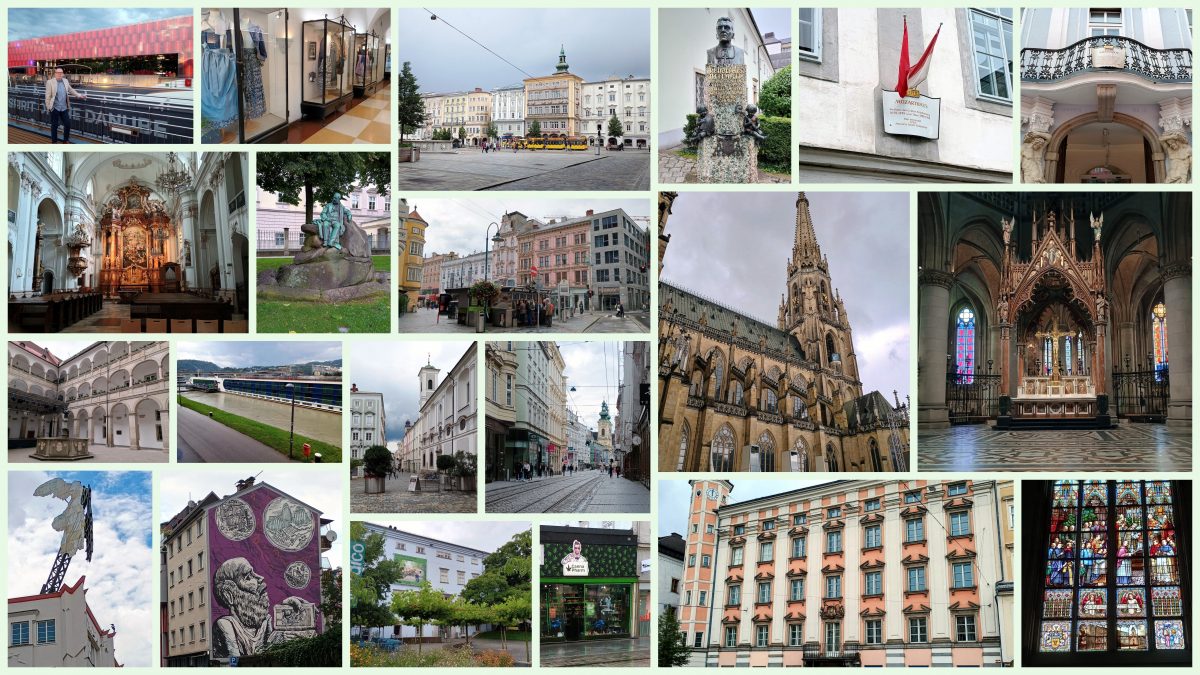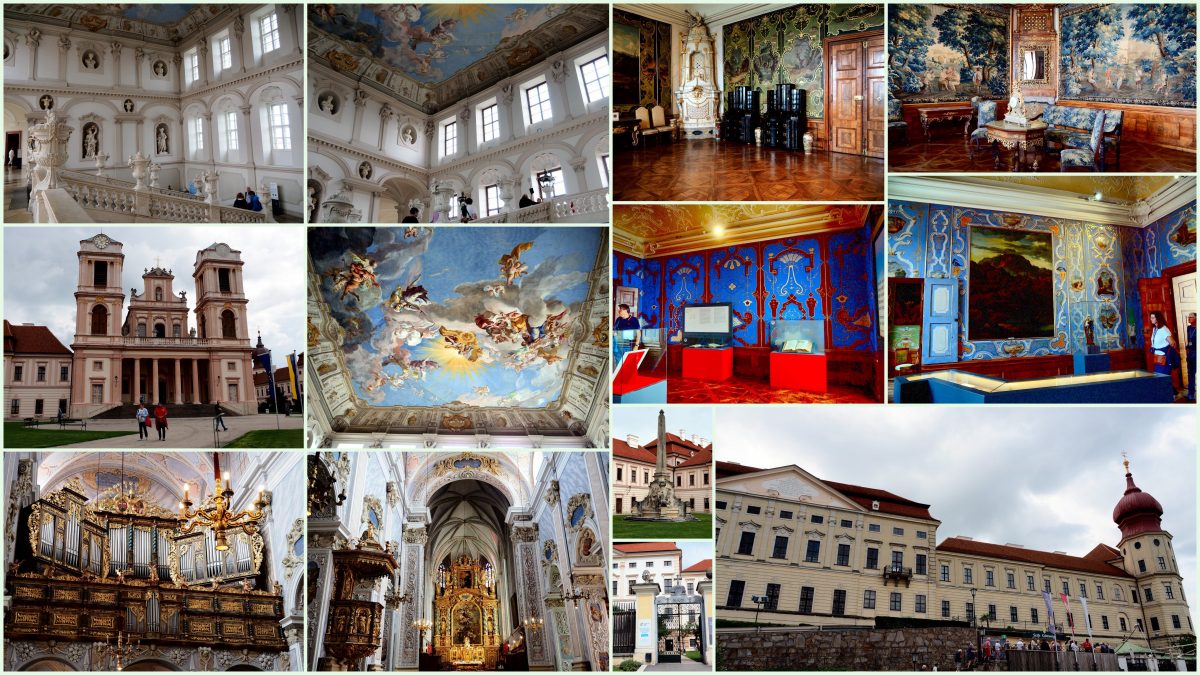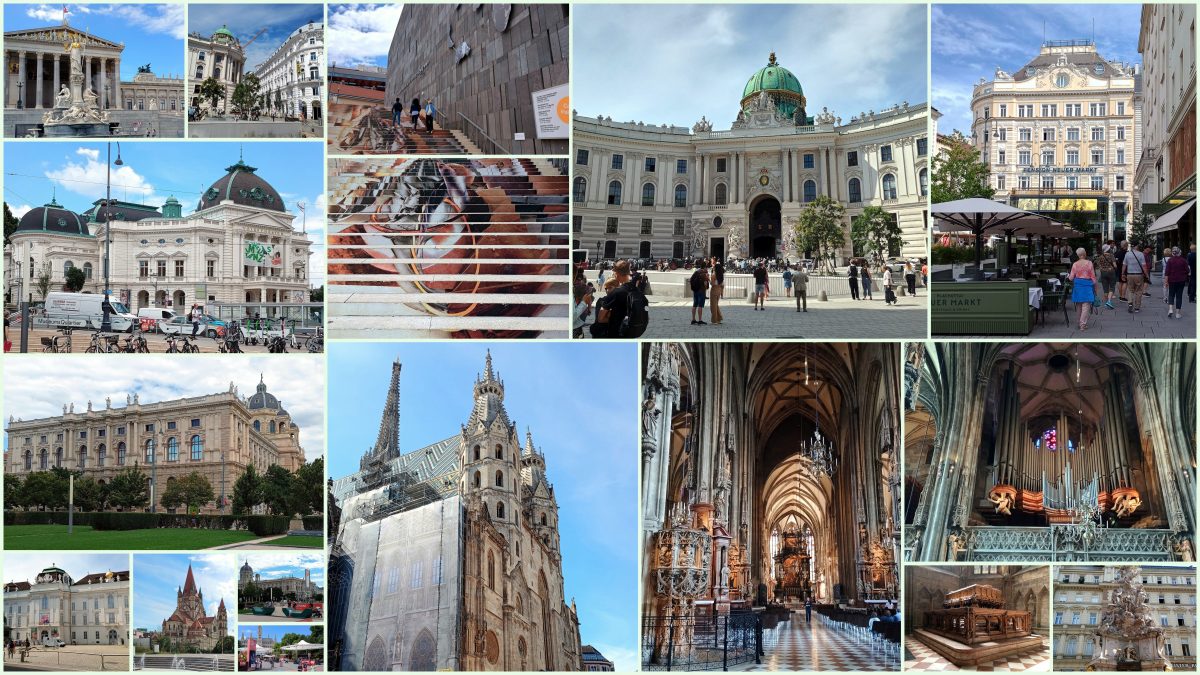Back from a seven day Saga river cruise aboard the Spirit of the Danube, fulfilling an ambition both born and thwarted some years ago when a booked Emerald trip was cancelled as we were about to depart because of low water in the Passau area. So, accompanied by the Saga door to door service (excellent again) we set off hoping for better luck on this occasion,
We had a fairly late arrival and so the first evening was a little rushed – still relatively well organised though and we both thought that the cabin, although not particularly big, could not have been designed any better. We didn’t even fill all the space assigned to clothing and other holiday paraphernalia, which is definitely a first. Meals were ok, service was fine, entertainment was understandably limited but the Saga experience was again not substantially better than, say, Riviera Cruises. We are not trying to be hyper critical and Saga do cater very well for the elderly and less mobile, which is to be applauded, but they are not in our opinion and in general, significantly superior to other cruise lines (sea and/or river). Check out my other blog entries here and here for comparisons.
Regensburg
This was our embarkation port and the first chance to explore on what, in fairness, turned out to be a quite tight and busy schedule, although we never felt rushed. We knew so little about this place we thought it was pronounced with a ‘soft g’ and had no idea that the medieval city centre was a UNESCO World Heritage site – so bah sucks for the Dean’s educational upbringing, it was clearly lacking in geographical breadth. For those who want to know more (there must be one surely) it is the biggest medieval city site north of the Alps, and noted for it’s historical importance for assemblies during the Holy Roman Empire. In 2014, Regensburg was among the top sights and travel attractions in Germany (who knew). We did what we like to do best in our dotage, which is to amble aimlessly around the old town just soaking up the sights. We thoroughly enjoyed it and, convinced we’d ‘done it all’, I declined the afternoon walking tour and stayed on the ship. Mrs. No Name is made of sterner stuff and did join it so we all thank her for the photos of the Dom cathedral interior (started in 1275, completed in 1634) and the Roman Porta Praetoria. Incidentally, the two pictures of us on the Stone Bridge don’t really give any indication that we are on a 12th Century construction seen as a highlight of medieval bridge building.
Passau
The infamous Paasau (in our household anyway, as it was the flooding focal point that resulted in the cancellation of our previous attempt at a similar cruise) was the next day’s port of call. Again, we did our own thing and strolled around a town that probably doesn’t need reminding that Adolf Hitler and family lived here for around three years (1892-1894). It also has WW2 connections and housed three sub camps of the notorious Mauthausen-Gusen concentration camp. It was a little damp when we set out but on a cheerier note, it soon got brighter and the second half of the visit was completed in lovely sunshine. We went in St. Stephens Cathedral, which housed the largest church pipe organ in the world until it was usurped by a Los Angeles church when the latter was extended in 1994. Also, the organ structure was partly obscured by repair / renovation work – still impressive though. We also passed by the early 18th Century New Bishop’s Residence and took a look at St. Nikola Church, which dates back to the 11th Century when it was an Augustinian monastery – the crypt is a remnant of those times. Niedernburg church, once a Benedictine Abbey and home of the “English Ladies”, is set in the heart of old town. As the Benedictine Abbey, Niedernburg was declared an imperial abbey by emperor Henry II. Frankly, I was a little ‘church crazy’ by this time but I do believe the collage has interior shots of St. Stephens Cathedral (100% certain) and the plainer interior of Niedernburg (pretty sure, I’ll go 85%). 🙂
Linz
Onto Linz and now we’ve crossed the border and into Austria. Docked right next to the Museum of Modern Art, it was a short stroll into the heart of a picturesque town centre, again well populated by a variety of churches (there may be a theme developing), along side a number of impressive secular buildings. There is of course another Hitler connection, as he spent most of his childhood here when his family moved from the border town of Braunau am Inn, where he was born. If you know where to look, there are echoes and slight indications of Hitler’s extensive architectural plans for Linz and for a time he wanted to make the city the main cultural centre of the Third Reich. Among the religious architectural highlights are the Old Cathedral (1669-78), the exterior of which we ‘circumnavigated’ and whose claim to fame is Anton Bruckner’s role as church organist from 1856-68. We avoided the worst downpour of the whole trip by fortuitously timing our visit to St. Mary’s Cathedral (New Cathedral) at just the right time. This cathedral is relatively late (the first stone was laid in 1862) and is the largest in Austria, with 20,000 seats. Apparently, no building was allowed to be taller than Vienna’s St. Stephen’s cathedral, so the spire is two metres shorter than the Viennese cathedral (more on that one later). All that plus the Ursuline Church dedicated to Archangel Michael, built in the 18th century for the local Ursulines and the Minoritenkirche (Church of the Minor Friars), originally a twin nave church of the monastery of the Minor Friars. It was founded in 1236, and the building was returned to the order in 1678 following the Reformation – and we didn’t even get to see St. Martin’s Church, thought to be the oldest in existence in the whole of Austria but out of the centre. And finally, let’s not forget Johannes Keppler (third law of planetary motion, don’t you know), the botanical gardens, lovely town squares and the Cannapharm cannabis shops (you heard me)!
Melk
On to Melk and an included excursion to Melk Abbey. When we moored up and could see how close the Abbey was to the ship I could sense the silent resentment building from you know who but after the steep ascent to said location I could feel the better half’s ire abate somewhat. Interestingly, there were no photos allowed of the interior and, surprisingly, the principle was (largely) supported – so the collage is of the exterior and accompanying grounds only. The tour commentary was excellent but frankly I am now of an age when very little stays in the addled brain for very long. All I can tell you is that the Abbey is a Benedictine abbey above the town, on a rocky outcrop overlooking the Danube river, adjoining the Wachau valley. The abbey contains the tomb of Saint Coloman of Stockerau and the remains of several members of the House of Babenberg, Austria’s first ruling dynasty. The abbey was founded in 1089 when Leopold II, Margrave of Austria gave one of his castles to Benedictine monks from Lambach Abbey, but the current building was built between 1702 and 1736 to designs by Jakob Prandtauer. Particularly noteworthy are the abbey church with frescos by Johann Michael Rottmayr and Paul Troger. Also of note is the Melk Abbey Secondary School, one of Austria’s oldest Catholic private schools; the monastery school was mentioned for the first time in 1160. Even now, 900 students are taught here in a comfortable, human and inspiring atmosphere. School should not only be learning of dates and facts, memory training and the stimulation of intellectual abilities, but must particularly contribute to the nobleness of the heart. Spirited dialogue and an invigorating community should be perceptible. And no, I remembered none of this in any detail, just enough to research it on our return!
Krems / Gottweig Abbey
A longer excursion today, as we visited both the city of Krems and interesting Gottweig Abbey. So, first to Krems and apparently one of the oldest habitats on the Danube. We took a quick snap of the Steiner Tor, which is the only surviving member of the original four city gates. Three coats of arms from 1756 adorn the city entrance, which I surprisigly captured on the collage, along with the Steiner Tor itself. Beyond the Steiner Tor is the Upper Landstrasse, which is the pedestrian zone of Krems and along with Lower Landstrasse (obviously didn’t exercise the brain cells when naming the main street) and is the main axis of the old town since the Middle Ages. After the walking tour we ambled around on our own, passing the old Piarist Church. Apparently, its origins date back to 1284 when it was initially built as a Gothic hall church dedicated to Saint Nicholas. However, after being handed over to the Order of Friars Minor (Franciscans) in 1616, it underwent extensive renovations following Baroque architectural principles under the guidance of master builder Jakob Prandtauer. We enjoyed the stroll, but accepted we weren’t there long enough to get more than a superficial look at the town.
Then onwards and upwards (literally) for a short drive to Gottweig Abbey, in its elevated position on the eastern edge of the Danube Valley.It was founded in 1083 by Altmann, Bishop of Passau. In the middle ages the abbey was a seat of learning with a library and a monastic school. The abbey went through a period of decline during the 15th and 16th centuries and in 1580 it was mostly destroyed by a fire. Under a new abbot brought in from Melk Abbey the monastery was rebuilt and restored. After another fire in 1718 the abbey had to be rebuilt again. The new building includes the largest Baroque staircase in Austria with a fresco that is considered a masterpiece of its era. Today the abbey is renowned for its library which holds a valuable collection of books, manuscripts, coins and antiquities. Despite its history of welcoming guests from all over the world, still shocked to mingle with ‘guests’ checking in to what is to all intents and purposes, a simple hotel. Anyway, this had a very different feel to Melk Abbey and photos were allowed everywhere so the collage reflects that. Despite the grandeur on show, it had what I thought was a simpler and more austere setting. On reflection, maybe peaceful is a more apt word.
Wachau Valley
Not a destination as such, but a cruising afternoon through the Wachau Valley and a chance for some much needed rest and relaxation. The Wachau Valley is a picturesque region in Austria, recognized as a UNESCO World Heritage site in its own right. It is a scenic stretch of the Danube River valley known for its vineyards, apricot orchards, medieval castles, and abbeys. As such, we’d been travelling along it for most of the journey anyway. It was pretty enough, but not so demanding that we felt the need to go up to the sun deck to catch the views, content to lazily sample only the port side from the Juliet Balcony of our cabin! We took a few shots for flavour and we were lucky enough to be on the right side (makes a change) to catch charming towns like Dürnstein and historic sites such as Dürnstein Castle (where Richard the Lionheart was imprisoned). The Wachau Valley is a popular tourist destination in its own right, attracting visitors with a range of activities. You can explore the region by boat tours on the Danube (we saw plenty), cycling along scenic paths, or hiking the Wachau World Heritage Trail.
Vienna
Our final port of call was the Austrian capital and what a delightful surprise. No doubt partially influenced by the lovely weather, I thought it was a beautiful city – or what we saw of it anyway. The initial walking tour took us to St. Stephen’s Cathedral (told you it would rear its head again), which was originally built in 1147, although its South Tower wasn’t completed until 1433. It was another cathedral and another very impressive interior, but we were a little cathedral blasé by now. We also took the option to involve ourselves in a more energetic trek around Vienna’s central area, full of incredible facades and palaces galore. The Hofburg Palace in particular, was an architectural splendour we would probably have missed had we been walking independently. Nowadays, it is apparently the home of the National Library, the Imperial Treasury, the Collection of Musical Instruments, the Museum of Ethnography and the Spanish Riding School, amongst other things. It’s on the collage, but I’ll let you see if you can spot it.
On disembarkation day, we and quite a few others had a relatively late flight home so Saga took us back into Vienna for a little more free time in Vienna – kudos to them for that, they could have just dumped us off at the airport. We decided to visit the Leopold Museum in the Museum Quarter but, to our chagrin, when we got there, it was closed – only for three days but it meant the promised delights of Gustav Klimt and Egon Schiele sadly passed us by. But we were in the Museum Quarter so we decided to go to the MUMOK instead. The Museum of Modern Art has a collection of 10,000 modern and contemporary art works, including major works from Andy Warhol, Pablo Picasso, Joseph Beuys, Nam June Paik, Wolf Vostell, Gerhard Richter, Jasper Johns and Roy Lichtenstein. I’ll be frank, three of the aforementioned were new to me but then I am a practiced philistine of many years standing, so what can the discerning readers expect. We briefly scoured all the museum floors and what we saw was mainly well worth the entry fee (it was a modern art museum, so not everything would be to our liking). So, forays over two days, brief though they were, gave me in particular a real desire to return to Vienna for a longer duration to absorb more of its lovely and very walkable town centre. Can’t of course speak for others in the party. 🙂
Flight home was delayed but the pick-up was waiting for us in Heathrow arrivals (the driver, not the car obviously) and once again we had an exemplary and surprisingly swift return home – and we didn’t spare the horses!

